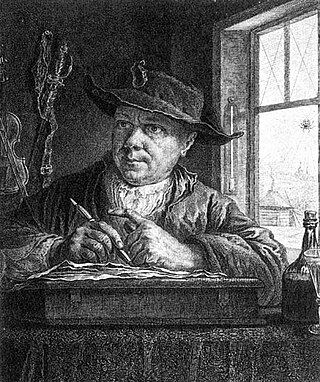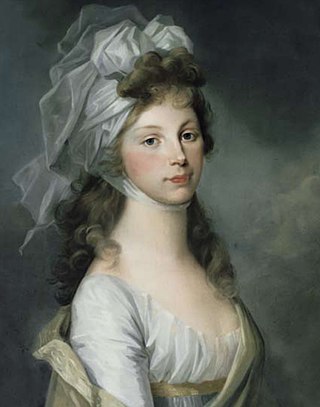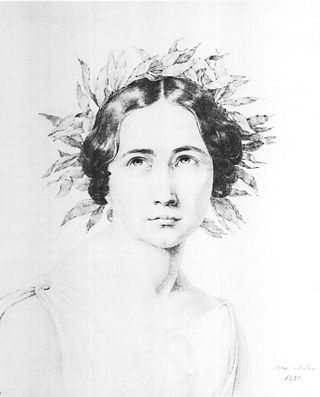Life and work
He was born to Antoine Bardou (1697–1783), a stocking weaver from Languedoc, and his wife Elisabeth Suzanne Pederotta. In the late 1840s, while he was still a young child, his family moved from Basel to Berlin.
He attended the Französisches Gymnasium Berlin but, since the time he was only eleven, he had been taking drawing lessons at the Academy of Arts with Blaise Nicholas Le Sueur. By 1770, he was taking his own students. In 1804, he was named a member of the Prussian Academy of Arts. By 1806, he was already being confused with the portrait painter, Johann P. Bardou [ pl ], a Baltic-German artist who worked in Warsaw and St. Petersburg.
Among his best known portraits are those of the poet, Johann Timotheus Hermes, Princess Louise of Prussia, Henri de Catt (private secretary to Frederick the Great), and the composer, Carl Friedrich Zelter. He worked mostly in pastels, but his larger portraits are in oils.
He died at the age of sixty-nine in Berlin. His younger brother, Emanuel Bardou, was a sculptor and his nephew, Karl Wilhelm Bardou, was also a portrait painter.

Henry Fuseli was a Swiss painter, draughtsman, and writer on art who spent much of his life in Britain. Many of his works depict supernatural experiences, such as The Nightmare. He painted works for John Boydell's Shakespeare Gallery and created his own "Milton Gallery". He held the posts of Professor of Painting and Keeper at the Royal Academy. His style had a considerable influence on many younger British artists, including William Blake.

Anton Raphael Mengs was a German painter, active in Dresden, Rome, and Madrid, who while painting in the Rococo period of the mid-18th century became one of the precursors to Neoclassical painting, which replaced Rococo as the dominant painting style in Europe.

Johann Friedrich Overbeck was a German painter and a founder of the Nazarene art movement.

Maurice Quentin de La Tour was a French painter who worked primarily with pastels in the Rococo style. Among his most famous subjects were Voltaire, Rousseau, Louis XV and the Madame de Pompadour.

Carl Joseph Begas, or Karl Begas, was a German painter who played an important role in the transition from Romanticism to Realism. He was the first in a multi-generational "dynasty" of artists.

Joseph, Baron Ducreux was a French noble, portrait painter, pastelist, miniaturist, and engraver, who was a successful portraitist at the court of Louis XVI of France, and resumed his career at the conclusion of the French Revolution. He was made a baron and premier peintre de la reine, and drew the last portrait ever made of Louis XVI before the king's execution. His less formal portraits reflect his fascination with physiognomy and show an interest in expanding the range of facial expressions beyond those of conventional portraiture.

Johann Peter Krafft was a German-born Austrian painter who specialized in portraits, historical works, and genre scenes.

The Prussian Academy of Arts was a state arts academy first established in Berlin, Brandenburg, in 1694/1696 by prince-elector Frederick III, in personal union Duke Frederick I of Prussia, and later king in Prussia.

Johann Christian von Mannlich was a German painter and architect.

Friedrich Georg Weitsch was a German painter and etcher.

August Friedrich Oelenhainz was a German painter.

Georg Friedrich Schmidt was a German engraver, etcher and pastel painter, in the Rococo style.

Ludwig Wilhelm Wichmann was a German sculptor. He specialized in making portrait busts.

Emanuel Bardou was a Swiss sculptor who worked at the Prussian Court in Berlin.

Oskar Begas was a German portrait and history painter.

Henriette-Félicité Tassaert was a German painter of Flemish extraction.

Karl Wilhelm Bardou was a German portrait painter who worked in Russia. Pastels were his preferred medium.

Jacob Wilhelm Mechau (1745-1808) was a German landscape painter, graphic artist and etcher. His style was part of the transition from Classicism to Romanticism.

Emilie Linder was a Swiss painter and art patron.

Johann Harper was a Swedish painter who worked at the Prussian Royal Court.
This page is based on this
Wikipedia article Text is available under the
CC BY-SA 4.0 license; additional terms may apply.
Images, videos and audio are available under their respective licenses.




















